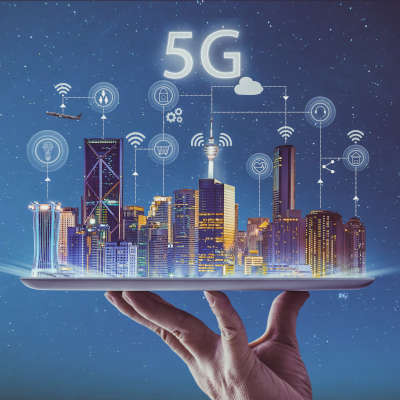TS3 Technologies Blog
What 5G Means for the Internet of Things
Few technologies in our time have been as anticipated as the fifth generation of wireless communications. 5G, as it is colloquially known, is promising to bring a whole new level of automation to society and business. One place 5G is sure to make big waves is with the Internet of Things, the billions of smart devices and services that are increasingly being leaned on as a new economy emerges. Today, we will take a brief look at 5G’s current state, its capabilities, and what it means for the future of the Internet of Things.
5G at the Start of 2021
5G has been used in marketing for several years now, but it was only in 2020 that any telecoms started pushing out the technology. There are three major benefits of 5G:
- Lower latency - The technology promises to basically eliminate the latency issues people have with their wireless cellular applications.
- Increased rates - Faster wireless speeds allow data to be transmitted, providing users with content quicker.
- Enhanced capacity - As 5G grows, more devices will be able to be connected, meaning more can be done.
As with every upgrade made to cellular networks, it takes some time to implement as telecoms need to put the infrastructure in place and manufacturers need to create devices that support this new technology.
What 5G Means for IoT
The Internet of Things has been growing and growing for years now. Some estimates put the total number of “things” on the IoT at about 26 billion in 2020. With technology that will allow tools to operate with virtually no latency, IoT devices can be developed to do many things that aren’t possible with 4G LTE, the cellular platform that is used by most users today. Since the viability of Internet of Things devices is tied to how they perform, the lack of latency and the increased speed is going to help developers produce devices around consumer’s lives more accurately and proficiently than ever. With 5G speeds, which are reported to be up to 7.5 Gbps or about .94 gigabytes per second. To put that in perspective, users could potentially download an average 1080p movie in about 8 to 10 seconds. This means major changes for society. Here are a few examples of how 5G is going to change the way we look at IoT devices:
- Manufacturing - Business is going to change precipitously, but no industry will see the gains that manufacturers will. The low-latency, high-speed connections means that business can happen in virtual real time, with massive amounts of data processed and rendered to make decision-making simpler and a more dynamic process. This means quality control, procurement, distribution, and customer relationship management all improve as smart technology actively tracks and reports data at remarkable speed.
- Supply chain - Today, supply chain management requires a lot of oversight. IoT has been slowly being deployed to make this process more efficient, but with the 5G connectivity and reporting issues that today’s smart devices have, it will improve a business’ ability to manage their supply chain effectively.
- Municipal - One of the most interesting ways that IoT is being deployed is as automotive triggers for municipal services. With the implementation of 5G and IoT, you will begin to see “smart cities” developed where essential utilities such as water, sewer, traffic, and electricity are all managed through the use of IoT devices that modulate the need for changes to these systems with very little human oversight: saving taxpayers gobs of cash.
- Autonomous vehicles - One of the most pronounced IoT devices being tied to a 5G upgrade are autonomous vehicles. This not only includes taxis and other car services, it includes the multi-billion-dollar shipping industry. A lot of information goes into making an autonomous vehicle safe for road use, and with 5G you will finally have the speed and reduction of latency to make it a viable situation.
- Healthcare - In healthcare, 5G will make healthcare more efficient by being able to handle the enormous amount of data that is sent and received. Today, these systems are useful but are often marginalized by the speeds and latency of modern Internet connections. With gigabit speeds and very little perceptible latency, you will begin to see that all information that is needed for every patient is there on demand.
The Internet of Things and 5G are two emerging technology trends that look as if they will improve our society. What do you think? Do you think that the convergence of these two technologies means as much as it seems to? Leave your thoughts in the comments section below and stop back at our blog for news and insight about today’s (and tomorrow’s) information technology.





Comments